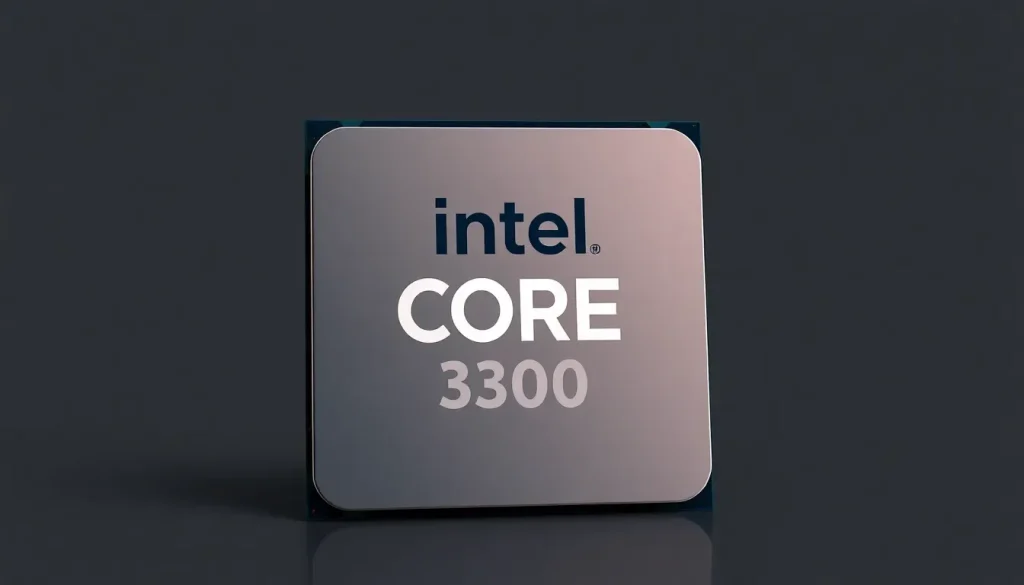Intel Core Ultra 300 50% Faster Than Lunar Lake at Same Power Usage

With Intel's recent announcements, the spotlight is now on the new Intel Core Ultra 300 processors, also known as Panther Lake. These chips are set to revolutionize the computing landscape with their advanced architecture and enhanced performance. Previously, we’ve discussed their graphical capabilities, particularly the Intel Xe3 architecture and the Intel XeSS 3 with Multi Frame Generation, which positions itself as a competitor to NVIDIA's DLSS. Now, let’s delve deeper into the CPU specs, addressing various configurations differentiated by core count and GPU capabilities.
The Intel Core Ultra 300 processors are built using the cutting-edge Intel 18A manufacturing process. They feature a completely new core configuration. The high-performance cores are known as Cougar Cove (P-Core), while the energy-efficient cores are termed Darkmont (E-Core). Additionally, they include Intel Xe3 Celestial graphics and the 5th Generation of their NPU, named NP5, which is set to debut in early 2026.
Specifications of the Intel Core Ultra 300 Processors (Panther Lake)
While specific model names are yet to be announced, the base Intel Core Ultra 300 processors will feature a CPU with up to 8 cores and Intel Xe3 graphics with up to 4 Xe-Cores. The higher-end models will boast up to 16 cores, with options for 4 Xe-Cores or a powerful integrated GPU (iGPU) that includes up to 12 Xe-Cores. All models will incorporate the NPU 5, IPU 7.5, a new display engine, and connectivity options such as Wi-Fi 7, Bluetooth 6, and Thunderbolt 5.
Depending on the selected model, memory options will range from DDR5 at 6,400 MT/s to LPDDR5X at 9,600 MT/s for the top-tier laptops with the most robust iGPU. This increase in memory bandwidth is expected to enhance performance significantly. The architecture supports DDR5 memory in SO-DIMM format at 7,200 MT/s or LPDDR5X at 9,600 MT/s, indicating a clear focus on boosting bandwidth capabilities.
The computing tile now offers up to 18 MB of L3 cache alongside 8 MB of memory cache, which helps reduce traffic to DRAM, effectively minimizing latency. The Cougar Cove (P-Core) cores provide 3 MB of L2 cache and 256 KB of L1 cache, in addition to a small L0 data cache for low-latency access. Meanwhile, the Darkmont (E-Core) clusters, composed of four cores, share 4 MB of L3 cache. Notably, the 16-core models include even more efficient LP-E Core cores.
Performance and Energy Consumption Insights
According to Intel, the Intel Core Ultra 300 (Panther Lake) processors deliver a 10% increase in single-core performance compared to Lunar Lake (Core Ultra 200V) and Arrow Lake (Core 200K). Despite this modest improvement, it achieves it without increasing energy consumption. Most impressively, they consume 40% less energy while maintaining comparable performance.
In terms of multi-core tasks, these processors promise over a 50% performance gain compared to Lunar Lake while keeping energy usage constant; however, they show a 30% decrease in performance compared to Arrow Lake, which is a high-end line of processors designed for gaming laptops and workstations. These advancements can largely be attributed to the Intel 18A lithography and a balanced configuration of P, E, and LP-E cores.
Moreover, the integrated Intel Xe3 graphics have been discussed in previous articles, and the NPU5 is expected to deliver around 50 TOPS in AI performance. While this shows a modest enhancement over the NP4 of Lunar Lake, it offers significantly greater area efficiency. With support for new AI formats like FP8 and INT8, it promises to double performance while consuming 40% less energy. When combined with the CPU and GPU, the projected performance reaches around 180 TOPS.
To wrap up the performance improvements, Intel has enhanced its performance management system with an improved Thread Director, enabling dynamic adjustments based on workload demands. In scenarios of high graphical demand, this system allocates tasks to the efficiency cores (E-cores) to free up more power for the GPU. Intel claims this results in an increase of up to 10% in gaming performance.
Additionally, the company has introduced the Intelligent Experience Optimizer, a utility that automatically adjusts Windows power modes according to system needs. Thanks to this intelligent optimization, Intel asserts that it is possible to achieve up to 20% more performance without increasing energy consumption.
Comparing Intel Core Ultra 300 with Other Generations
When evaluating the Intel Core Ultra 300 processors against their predecessors and competitors, it's essential to highlight key differences and improvements. Here’s a breakdown of how they stack up:
- Architecture: Built on the Intel 18A process, offering better performance and efficiency.
- Core Configuration: Innovative combinations of P, E, and LP-E cores for balanced performance.
- Power Consumption: Notable reductions in energy usage while maintaining or enhancing performance.
- Integrated Graphics: Enhanced Intel Xe3 capabilities for improved visual output, especially in gaming.
- NPU5 Performance: Increased efficiency in AI tasks with support for new formats.
- Thread Management: Advanced Thread Director for optimized task allocation based on workload.
In summary, the Intel Core Ultra 300 processors present a significant step forward in processing technology, promising to deliver performance improvements across various applications while maintaining energy efficiency. As the tech world eagerly anticipates their release, users can expect these advancements to redefine their computing experiences.
For a deeper look into Intel's latest innovations, check out this insightful video:




Leave a Reply